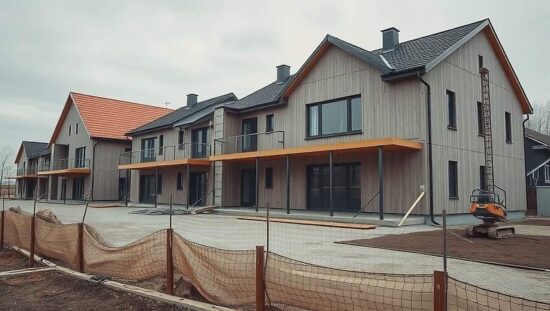Data released Friday by the Federal Statistical Office (Destatis) reveals a modest increase in residential construction approvals across Germany, raising questions about the effectiveness of government policies aimed at alleviating the ongoing housing crisis. While 19,300 housing units received building permits in August 2025, representing a 5.7% increase compared to August 2024, the overall picture remains complex and potentially indicative of systemic issues.
The growth is primarily driven by new construction, with approvals rising 5.2% to 15,800 units. Renovations of existing buildings also saw an 8.0% increase, totaling 3,500 approvals. Accumulated approvals for the period January to August 2025 reached 151,200 units, a 6.5% uptick from the previous year. This figure includes a significant 7.6% increase in new build approvals, amounting to 8,600 additional dwellings.
A notable trend is the diverging performance of different housing types. Approvals for single-family homes surged by 15.5%, with 3,900 more units given the green light, potentially reflecting a shift towards suburban development and individualized housing solutions. Conversely, approvals for two-family homes experienced a decline of 5.3%, suggesting a decrease in demand for this particular housing model. The majority of new builds – 79,100 units – remain focused on multi-family dwellings, although this represents a more moderate increase of 4.9% year-on-year.
However, the decline in approvals for residential units within non-residential buildings – such as house manager apartments – by 18.5% highlights a concerning trend. This could be tied to evolving economic pressures impacting commercial property development and potentially restricting affordable housing options integrated within these projects.
While the increase in approved housing units sounds positive on the surface, critics argue that the pace of construction is still insufficient to meet the nation’s significant housing deficit. Furthermore, the uneven distribution of approvals, with notable variations across housing types and a decline in integrated residential units, raises concerns about the long-term viability and affordability of the built environment. Analysts are now looking to future data releases to ascertain whether this August uptick signals a broader recovery in the housing sector or represents a temporary fluctuation masking underlying challenges. Government interventions aimed at stimulating affordable housing construction now face increased scrutiny given these nuanced approval patterns.





